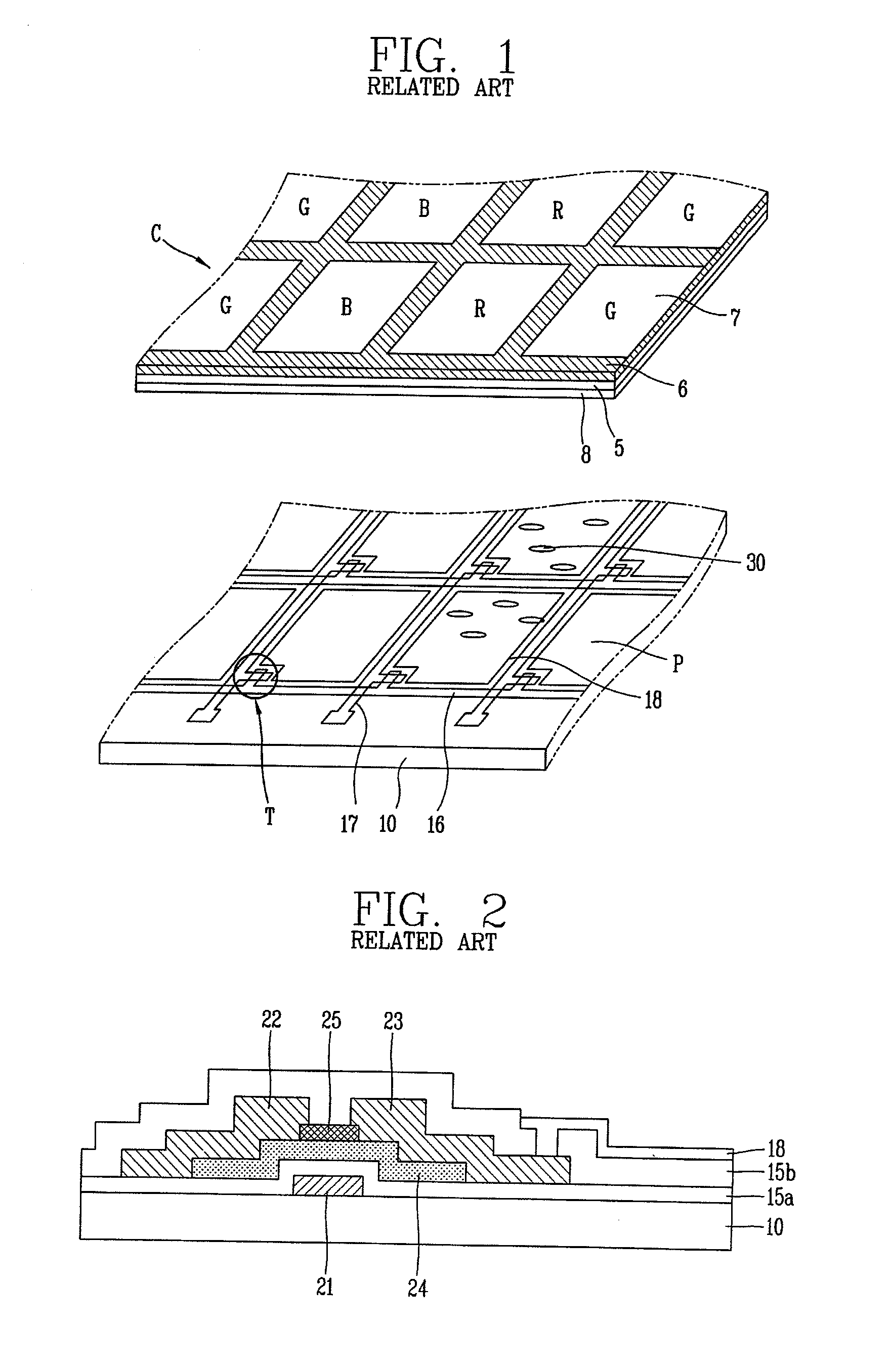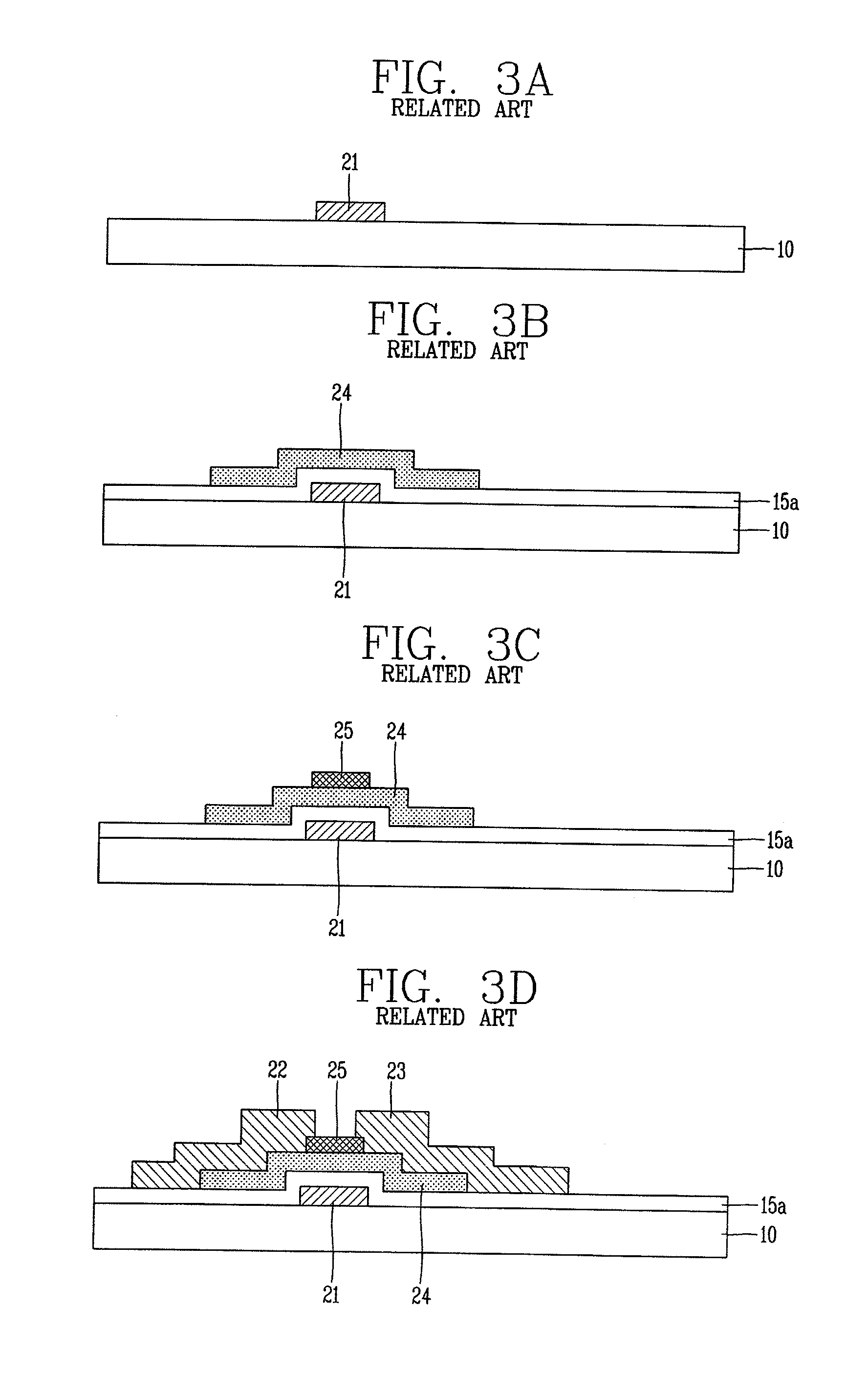Oxide thin film transistor and method of fabricating the same
- Summary
- Abstract
- Description
- Claims
- Application Information
AI Technical Summary
Benefits of technology
Problems solved by technology
Method used
Image
Examples
Embodiment Construction
[0062]An oxide thin film transistor (TFT) according to embodiments of the invention will now be described in detail with reference to the accompanying drawings.
[0063]FIG. 4 is a plan view showing a portion of an array substrate of a liquid crystal display (LCD) device according to an embodiment of the invention. In actuality, N number of gate lines and M number of data lines are formed to cross each other to define the M×N number of pixels in the LCD device, but in order to simplify the explanation, only a single pixel is shown in FIG. 4.
[0064]FIG. 5 is a sectional view schematically showing a structure of an oxide thin film transistor (TFT) according to an embodiment of the invention, which is taken along line A-A′ of the array substrate illustrated in FIG. 4. In this instance, FIG. 5 schematically shows the structure of an oxide TFT using a ternary system or quaternary system oxide semiconductor comprising a combination of AxByCzO (A, B, C═Zn, Cd, Ga, In, Sn, Hf, Zr; x, y, z≧0), a...
PUM
 Login to View More
Login to View More Abstract
Description
Claims
Application Information
 Login to View More
Login to View More - R&D Engineer
- R&D Manager
- IP Professional
- Industry Leading Data Capabilities
- Powerful AI technology
- Patent DNA Extraction
Browse by: Latest US Patents, China's latest patents, Technical Efficacy Thesaurus, Application Domain, Technology Topic, Popular Technical Reports.
© 2024 PatSnap. All rights reserved.Legal|Privacy policy|Modern Slavery Act Transparency Statement|Sitemap|About US| Contact US: help@patsnap.com










